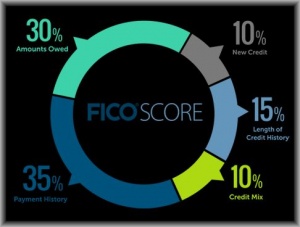Helping You To Calculate a Credit Score
 There are numerous methods of calculating a credit score, but when it comes to deciding on whether to borrow money to individuals, lenders will usually refer to the FICO scoring system to assess the eligibility of an individual claim. FICO, standing for Fair Isaac Corporation, is one of the most effective and widespread credit scoring models in existence today, and accesses multiple pieces of data from your credit history in order to deliver a detailed score for lenders and credit issuers to use.
There are numerous methods of calculating a credit score, but when it comes to deciding on whether to borrow money to individuals, lenders will usually refer to the FICO scoring system to assess the eligibility of an individual claim. FICO, standing for Fair Isaac Corporation, is one of the most effective and widespread credit scoring models in existence today, and accesses multiple pieces of data from your credit history in order to deliver a detailed score for lenders and credit issuers to use.
How FICO Works
The FICO scoring system looks at negative aspects of your credit history, but acknowledges the positive elements of your financial history too. Roughly speaking, the FICO system looks at five individual categories from which to determine an overall credit report score – Amounts Owed, New Credit, Length of Credit History, Credit Mix and Payment History. Each category holds a percentage value to your overall score, meaning a high score in one area can dramatically increase your credit report and improve your chances of landing the credit you’re looking for.
 Payment History accounts for 35% of your overall score and represents the most important aspect of your credit report. In short, it demonstrates your previous history with repaying owed credit to lenders, identifying any lags in repayment and lateness. The next most critical factor is Amounts Owed, representing 30% of your overall score. Owing credit while applying for new lines of credit can affect your score, but if you’ve demonstrated success at repayment in the past, this needn’t affect your chances of securing more credit.
Payment History accounts for 35% of your overall score and represents the most important aspect of your credit report. In short, it demonstrates your previous history with repaying owed credit to lenders, identifying any lags in repayment and lateness. The next most critical factor is Amounts Owed, representing 30% of your overall score. Owing credit while applying for new lines of credit can affect your score, but if you’ve demonstrated success at repayment in the past, this needn’t affect your chances of securing more credit.
Credit History accounts for 15% of your FICO score, but looks at numerous individual factors. This category will look at how long you’ve held individual accounts, when they were opened, the average amount of time you’ve held each of your accounts etc. The amount of time since you’ve accessed certain accounts will also be noted in your Credit History.
Generally speaking, the longer your credit history, the better opportunity you have for an improved score. Your Credit Mix, accounting for 10% of your FICO score, outlines the range of credit you’re using, including credit cards, loans, mortgages etc. Finally, New Credit accounts for 10% of your score, and identifies high-risk borrowers who might be prone to opening up multiple lines of new credit in short amounts of time.



